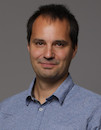Marine Robotics
Data is displayed for academic year: 2023./2024.
Lecturers
Lectures
Laboratory exercises
Course Description
Marine robotics is a branch of robotics that places emphasis on unmanned, autonomous marine vessels that find their application underwater and on water. Marine robotics has applications in exploration and conservation of marine species, habitats, and underwater cultural heritage, in aquaculture, maritime safety, offshore industry, and many others. This course focuses on navigation, guidance, and control of autonomous vessels (underwater and surface), as an upgrade on the topics of acoustic communication, sensors and mathematical modelling that are covered in the first part of the semester.
Study Programmes
University graduate
[FER3-EN] Control Systems and Robotics - profile
Elective courses of the profile
(2. semester)
Learning Outcomes
- define marine systems and their classification
- distinguish unmanned underwater vehicles and their application
- explain the principles of underwater acoustic communication and principles of operation of acoustic modems
- explain the principles of operation of sensors and actuators used in marine vehicles
- analyze mathematical models of vessels
- design low level controllers for vessels
- design guidance controllers for vessels
- design navigation systems for vessels
Forms of Teaching
Lectures
Theoretical lectures with practical examples. Group activities for improved learning on classes.
LaboratoryLaboratory exercises are composed of simulation and practical part. Simulation laboratory exercises are performed in MATLAB/Simulink and follow theoretical lecture covering all components of a navigation, guidance and control system for autonomous vessels. Final laboratory exercises bring together all components into a complete system that is tested and executed on the real vessel in the LABUST pool.
Grading Method
| Continuous Assessment | Exam | |||||
|---|---|---|---|---|---|---|
| Type | Threshold | Percent of Grade | Threshold | Percent of Grade | ||
| Laboratory Exercises | 50 % | 50 % | 50 % | 40 % | ||
| Final Exam: Oral | 50 % | |||||
| Exam: Oral | 60 % | |||||
Week by Week Schedule
- Role of oceans and seas in biological, geological and economic terms. The role and classification of marine robots in the exploration and exploitation of oceans and seas.
- Applications of marine robots in various marine domains.
- Coordinate systems, kinematic and dynamic models of marine robots.
- Modelling actuators and actuator allocation in marine robots.
- Control allocation for marine robots. Control allocation methods for over-actuated marine robots.
- Design of low-level controllers for marine robots.
- Designing guidance controllers for dynamic positioning controller of marine robots.
- Midterm exam week.
- Designing guidance controller for path-following with marine robots.
- Physical principles of underwater acoustics and applications in underwater acoustic communication.
- Underwater acoustics for tracking of marine animals and other acoustics sources.
- Sonars, acoustic cameras, acoustic localization systems and other acoustic based sensing for marine robots. Brief overview of other sensing used in marine robots.
- Measurement preprocessing, state estimation and sensor fusion in marine robots.
- Measurement preprocessing, state estimation and sensor fusion in marine robots.
- Presentation of practical work results and final oral exam.
Literature
Nikola Mišković (.), Use of self-oscillations in guidance and control of marine vessels,
For students
General
ID 223097
Summer semester
5 ECTS
L2 English Level
L3 e-Learning
30 Lectures
0 Seminar
0 Exercises
15 Laboratory exercises
0 Project laboratory
0 Physical education excercises
Grading System
89 Excellent
76 Very Good
63 Good
50 Sufficient


 Pristupačnost
Pristupačnost



